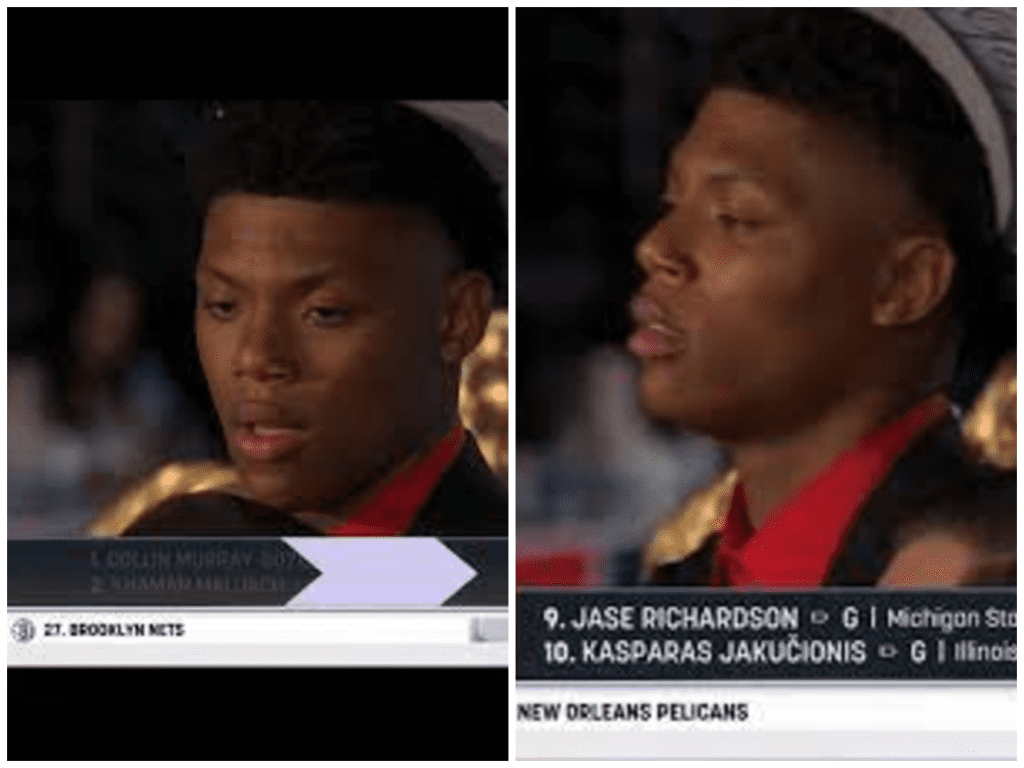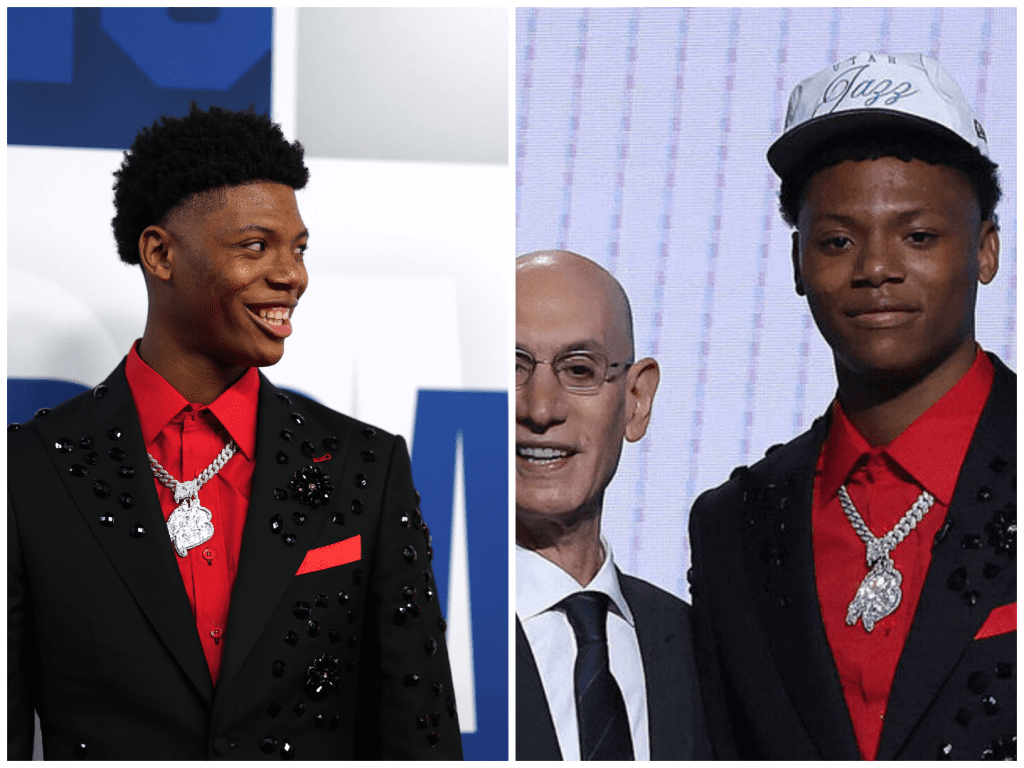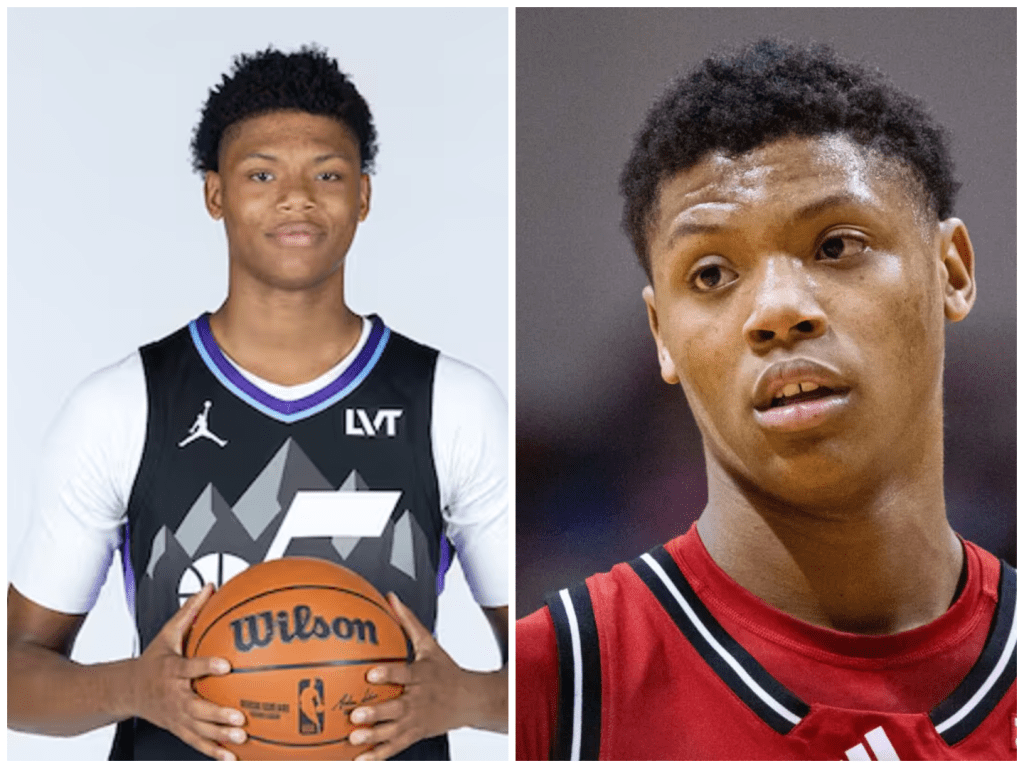Ace Bailey Didn’t Smile, Skipped the Utah Flight, and Sparked Drama Before Ever Wearing a Jazz Jersey—Now He’s Trying to Calm the Storm

For most young basketball players, draft night is supposed to be a celebration. It’s the moment their lives change forever. Suits are tailored, cameras flash, dreams are realized under bright lights. But when Ace Bailey heard his name called as the fifth overall pick in the 2025 NBA Draft by the Utah Jazz, it wasn’t smiles and tears of joy. It was stiff posture, a barely-there handshake, and eyes that didn’t light up. No smile, no excitement. Fans noticed immediately. And they didn’t forget.
The rumors were already there before the draft. Bailey, a long-limbed 6-foot-8 forward out of Rutgers with undeniable talent and sky-high potential, had reportedly informed several teams—including Utah and Charlotte—that he wasn’t interested in playing for them. It wasn’t personal, insiders claimed. He just preferred certain markets. Washington, New Orleans, and Brooklyn were rumored to be his top choices. What made it more dramatic was that he didn’t just say it quietly. His team made it loud. Bailey refused to work out for any team during the draft process except for one private showing in Chicago. The message was clear: “Take me if you want, but I’m not showing up everywhere.”
And then Utah did.
The Jazz, a franchise known for playing things conservatively, took the risk. They saw something in Bailey that outweighed the whispers. General Manager Danny Ainge has never been afraid of bold moves. He’s drafted controversial players before, traded stars, rebuilt teams brick by brick. But when he used the fifth pick on a player many believed didn’t want to be there, people started asking questions. The moment the camera zoomed in on Bailey’s face, it was like confirmation for those suspicions. He looked like someone who had just lost a bet. No enthusiasm. No “I can’t wait to get to work” energy. Just a quiet, awkward moment that quickly went viral.
What came next didn’t help. While other top picks boarded planes to meet their new teams, pose with jerseys, and tour training facilities, Bailey didn’t. He didn’t fly to Utah with the rest. He missed early group photos. And in today’s NBA, silence says a lot.

Fans on Reddit and X (formerly Twitter) were quick to turn disappointment into memes. One said, “Ace Bailey looked like he was at a dentist appointment when his name got called.” Another posted a split image—on one side, Bailey’s serious face, and on the other, past Jazz picks grinning ear to ear. The contrast was jarring. SportsCenter didn’t help the situation either, picking up on the moment and framing it like a mystery.
But it wasn’t just fans. Analysts joined in. ESPN’s Jonathan Givony reported that Bailey’s camp had been very selective during the draft process and had made it known they didn’t want to land in certain markets. That included Utah. Writers started comparing it to past holdout situations—though the NBA doesn’t allow a true draft re-entry like the NFL does, it sparked conversation about players pushing back against destinations they don’t like.
It felt like the Jazz were in trouble before the season even started. A top-five pick who didn’t want to be there? Not a good look for a franchise trying to rebuild around young talent.
But then, slowly, something shifted.
THE SHIFT FROM COLD SHOULDERS TO CAUTIOUS SMILES

Bailey eventually made his way to Salt Lake City. No flashy arrival. No grand entrance. Just a quiet start to what looked like damage control. He showed up to media availability. He wore the jersey. He spoke to reporters. And to everyone’s surprise, he didn’t sound like someone ready to demand a trade. He sounded grateful.
In his introductory press conference, when asked whether he ever considered not showing up for Utah, Bailey paused and then said simply: “No, not at all.” He added, “I’m just blessed to be here. Not a lot of people get to sit in this chair.” It wasn’t the most enthusiastic endorsement in NBA history, but it was calm. It was composed. And it was a sharp contrast to the icy energy from draft night.
He even cracked a joke about Utah’s mountains. “I didn’t even think the mountains were real,” he said with a smirk. For a player who days earlier looked like he’d just been handed a punishment, that small moment felt huge.
Jazz fans started to breathe again. Sportswriters began reworking their takes. Some went from “this will never work” to “maybe there’s a chance.” Bailey choosing jersey number 19 raised eyebrows too—it wasn’t a flashy number, but it felt intentional. A sign that maybe he wanted to make his own mark. Maybe he was ready to embrace the place he hadn’t wanted to be.
Danny Ainge, speaking quietly in the background, reaffirmed the team’s belief in Bailey. “He’s a competitor. He’s a worker. Once he gets here, he’ll see the opportunity.” Ainge has long trusted the Jazz’s development program—turning raw players into stars has been part of their DNA.
Still, the doubt lingered.
Was Bailey just saying the right things to avoid controversy? Was he really warming up to Utah, or just playing along until he could move on? In today’s NBA, where players switch teams with more frequency than ever, anything is possible. But in this moment, all signs pointed to a young man trying to reset his narrative.
And that’s what makes this story more than just a draft-day meme. It’s a window into how complicated it is for young stars entering today’s league. They’re not just choosing teams—they’re thinking about brands, cities, lifestyle, even social media presence. Playing in Utah is not the same as playing in Brooklyn. The lighting is different. The attention is different. The endorsement opportunities are different.
But in basketball terms, Utah offers something rare—a chance to be the face of something new. The Jazz have a young roster, draft capital, and a fan base that, once they love you, loves hard. It’s not a bad place to grow. And maybe Bailey is seeing that now.
The backlash also softened thanks to Bailey’s Instagram story where he reposted Utah highlights and training moments. He didn’t say much, but sometimes actions do more than words. He was showing up. That alone began to win fans back over.
It’s still early. No one knows how this will play out. Bailey could become the cornerstone of the next great Jazz team. Or it could fall apart fast. But what’s clear is this: the storm that followed draft night is starting to calm.
A LOOK AHEAD THAT’S HARD TO PREDICT
It’s possible that Ace Bailey and the Utah Jazz will look back on this summer and laugh. That what started as a media circus and fan meltdown will become just the awkward start to a long and productive partnership. It’s also possible that this was a quiet warning sign of future tension. The truth is, no one knows yet.
What we do know is that Bailey is in Utah now. He’s attending workouts. He’s wearing the jersey. He’s answering questions. Maybe not with over-the-top enthusiasm, but with respect. That alone is progress.
NBA careers are built on moments. Some are spectacular dunks and buzzer beaters. Others are quieter—like the moment a young man decides to lean in instead of pulling away. Bailey had a choice. He could’ve resisted. He could’ve fed the drama. But instead, he’s taking a breath, picking up a ball, and choosing to start.
And that might be the smartest move of all.